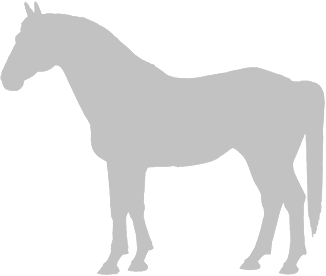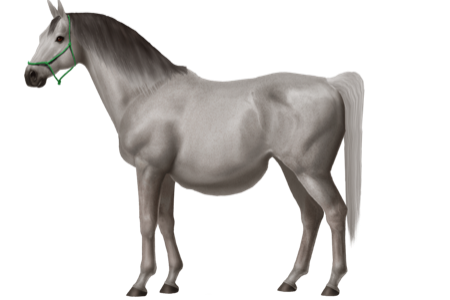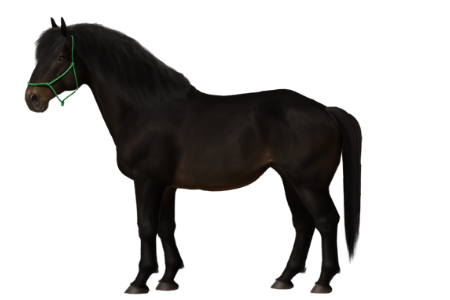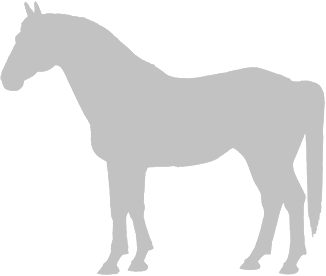Community Forum
Horse World Online
Breed horses and ponies, raise your foals, and train the next champion in this exciting and realistic online horse breeding game.
The new layout is in beta testing and we're inviting you to help us try it out! Click here to read the announcement post for details.
Beginner: Need help with identifying my horses colours
Forum rules
You can link to a horse using our new custom BBCode:
[horse=1234]Horses Name[/horse]
This will display the most recent photo of the horse as well as a link to him.
You can link to a horse using our new custom BBCode:
[horse=1234]Horses Name[/horse]
This will display the most recent photo of the horse as well as a link to him.
7 posts
• Page 1 of 1
-
Moonheart
- Posts: 3
- Joined: Fri Jun 25, 2021 8:15 pm
- Visit My Farm
Beginner: Need help with identifying my horses colours
Post by Moonheart »
Hi,
I‘ve already read the different explanations but it is a bit overwhelming and I‘m not sure, if I understood everything.
I would gladly appreciate your help in finding the exact names for my horses colours.
I‘m really interested in which genes they could have, so a explanation would be great!
1.
Moonstar

My thoughts:
-E (Black)
-A (Agouti)
-Sty (Sooty)
(Not sure if this is right)
2.
Moondream

(I have no clue for this one, although it seems to look a bit like another red dun I found)
3.
Forestleave

Probably a lot of black, but it also looked like a Smokey brown. Again, I‘m not sure.
4.
Moonshine

This is the „result“ from breeding 1. and 2. Does this help with finding out, which genes they have?
I‘m really sorry if I‘m bothering you with this probably obvious questions, but I want to understand the principle behind the colours and genes in order to be able to identify colours myself.
Thanks!
I‘ve already read the different explanations but it is a bit overwhelming and I‘m not sure, if I understood everything.
I would gladly appreciate your help in finding the exact names for my horses colours.
I‘m really interested in which genes they could have, so a explanation would be great!
1.
Moonstar

My thoughts:
-E (Black)
-A (Agouti)
-Sty (Sooty)
(Not sure if this is right)
2.
Moondream

(I have no clue for this one, although it seems to look a bit like another red dun I found)
3.
Forestleave

Probably a lot of black, but it also looked like a Smokey brown. Again, I‘m not sure.
4.
Moonshine

This is the „result“ from breeding 1. and 2. Does this help with finding out, which genes they have?
I‘m really sorry if I‘m bothering you with this probably obvious questions, but I want to understand the principle behind the colours and genes in order to be able to identify colours myself.
Thanks!
-
HorseRider123987
- Posts: 166
- Joined: Mon Feb 01, 2021 9:48 pm
- Visit My Farm
Re: Beginner: Need help with identifying my horses colours
Post by HorseRider123987 »
I'm not great at colours but I happened to know a few of these and don't worry if you don't get the colours, most people don'tMoonheart wrote:Hi,
I‘ve already read the different explanations but it is a bit overwhelming and I‘m not sure, if I understood everything.
I would gladly appreciate your help in finding the exact names for my horses colours.
I‘m really interested in which genes they could have, so a explanation would be great!
1.
Moonstar
My thoughts:
-E (Black)
-A (Agouti)
-Sty (Sooty)
(Not sure if this is right)
2.
Moondream
(I have no clue for this one, although it seems to look a bit like another red dun I found)
3.
Forestleave
Probably a lot of black, but it also looked like a Smokey brown. Again, I‘m not sure.
4.
Moonshine
This is the „result“ from breeding 1. and 2. Does this help with finding out, which genes they have?
I‘m really sorry if I‘m bothering you with this probably obvious questions, but I want to understand the principle behind the colours and genes in order to be able to identify colours myself.
Thanks!
Moonstar looks like a bay. Like you, I have no clue what colour Moondream is (I did say I'm not great
-
BlackOak2
- Premium

- Posts: 10570
- Joined: Sat Jan 30, 2016 12:41 am
- Visit My Farm
Re: Beginner: Need help with identifying my horses colours
Post by BlackOak2 »
Colors are difficult.HorseRider123987 wrote:I'm not great at colours but I happened to know a few of these and don't worry if you don't get the colours, most people don'tMoonheart wrote: Thanks!. I tried to learn the genes but gave up, it was too overwhelming for me as well!
Moonstar looks like a bay. Like you, I have no clue what colour Moondream is (I did say I'm not great). Forestleave looks like a smoky brown. Moonshine seems to be a wild bay but it's hard to tell with foals, I usually give the colour of my horses when they turn 3. I would wait until someone who knows their stuff sees your post and replies because I'm not entirely reliable
Have fun with the game!
Many of us learned what we know, by breeding the colors slowly. Working with black and adding dilutions like cream. Then working with bays and adding, and so on. Your eye starts to get used to seeing the colors this way.
Anyway...
https://www.horseworldonline.net/horse/profile/3130745 Moonstar is a bay. There does seem to be a little bit of sooty, but this could also just be a darkly colored bay. We don't really know how much sooty is involved with the base colors or how much the base colors deviate from one another. For instance, how many basic chestnut colors are there? The community figures (for the most part) there are somewhere between 25 and 50 base shading to each base color. And these are defined best when one things of paint for a wall. A single drop of color in a gallon of paint gives you the 'hint' of a color, so then drop two drops... and so on. So a base color of 25 different shadings (before sooty is added) may show little to no real differences, depending on the monitor each one of us are using.
Okay... Moonstar is an AC arabian, so his genes will be limited (use this to help: viewtopic.php?f=13&t=2653. For the most part, the information is correct). He will be:
E/E A/A and maybe with Sty, sooty.
or
E/e A/A
or
E/E A/a
or
E/e A/a
So without definite knowledge of what the exact genes are, many of us usually write it something like this:
E/- A/-
or
E/? A/?
Depending on how you feel more comfortable with it. I'd simply write it as: E? A?
The dominance factor for Agouti is as follows: Wild Bay (A+) over Bay (A) over Brown (At)
Wild Bay cannot hide. If the horse has wild bay, it'll always show (with the exception of chestnuts). Bay can hide when Wild Bay is showing. Bay cannot hide behind Brown. Brown will always hide unless Wild Bay and Bay are not present (with the exception of chestnuts).
If the horse is black, then no agouti (a/a) is present.
As an additional side note, on this game, wild bay is super short, black fetlocks (ankles). So if the fetlocks are black, but don't cross over the ankles, this is our wild bay. If they cross the ankles and shade the lower leg, this is bay and not wild bay.
Contrary to what the link suggests, arabians (from my knowledge) do NOT come in brown from the AC. The first line in the link for Arabians suggest this, it is a typo.
https://www.horseworldonline.net/horse/profile/3130730 - Moondream
This is a horse with the graying gene. A horse that has the graying gene will actually be born with an adult coat. So the newborn will appear to already have an adult coat. Within the first six months, the foal will develop gray googles over it's eyes.
Moondream appears to be a graying wild bay. But with the graying gene, it's a bit hard to determine if those fetlocks are wild bay or just bay. Many of these arabians end up being fleabitten grays, some are solid grays. Many of us will report the color as 'Graying Bay' (or graying wild bay) and leave it like that. Some of us prefer to offer the actual color of the gray 'Fleabitten Gray' or 'Steel Gray'. It is up to us, how we actually name our colors. Use what works best for you and keeps you on the right track for your own projects.
https://www.horseworldonline.net/horse/profile/3130761 - Forestleave
This mare is another AC. Forest horses are well known for their sooty genes. If you look at that AC link, you'll find that the forest horses cannot carry cream genes from the AC, so we can rule out that she is a smoky. But we (and I share this knowledge with you
Like this one:

Lastly, Moonshine, your foal. This is what I meant that the foal will be born with an adult coat and develop gray goggles. I am suspicious that she and her mother are wild bays. I suspect them to be short-legged bays, but the trait isn't too well defined. So calling them wild bays, especially if they keep popping like this over the longer legged bays, may not be an incorrect thing.
Anything else??
Notes:
Agouti will always have an E/e or an E/E
Chestnuts will always be an e/e and never show agouti.
Don't forget to check it out!
Quick Start Guide For Newbies
Link to additional information.
BlackOak2's Quick-Links
Quick Start Guide For Newbies
Link to additional information.
BlackOak2's Quick-Links
-
Moonheart
- Posts: 3
- Joined: Fri Jun 25, 2021 8:15 pm
- Visit My Farm
Re: Beginner: Need help with identifying my horses colours
Post by Moonheart »
Wow, thanks to both of you for the quick replies!
And special thanks for this really interesting explanation!
Just a few more questions:
-will horses with the graying-gene always have these „goggles“ and is it a safe way to determine them or is there another colour with similar appearance?
-how can I distinguish grey-genes and dun-genes when I only have a picture of the current state?
-what is a short-legged bay?
I think I‘m also going to experiment a bit by breeding different coats, thanks again for your help!
And special thanks for this really interesting explanation!
Just a few more questions:
-will horses with the graying-gene always have these „goggles“ and is it a safe way to determine them or is there another colour with similar appearance?
-how can I distinguish grey-genes and dun-genes when I only have a picture of the current state?
-what is a short-legged bay?
I think I‘m also going to experiment a bit by breeding different coats, thanks again for your help!
-
BlackOak2
- Premium

- Posts: 10570
- Joined: Sat Jan 30, 2016 12:41 am
- Visit My Farm
Re: Beginner: Need help with identifying my horses colours
Post by BlackOak2 »
-will horses with the graying-gene always have these „goggles“ and is it a safe way to determine them or is there another colour with similar appearance?Moonheart wrote:Wow, thanks to both of you for the quick replies!
And special thanks for this really interesting explanation!
Just a few more questions:
-will horses with the graying-gene always have these „goggles“ and is it a safe way to determine them or is there another colour with similar appearance?
-how can I distinguish grey-genes and dun-genes when I only have a picture of the current state?
-what is a short-legged bay?
I think I‘m also going to experiment a bit by breeding different coats, thanks again for your help!
The graying gene will always start at the gray goggles and usually by 6 months, you'll see them. However, sometimes bay coats and smoky coats will appear to have these goggles. I've been fooled before. Adult coats at birth is the giveaway. So what to do when the newborn coat could be a foal coat and not an adult coat, is a bay or smoky-gene'd color and at 6 months, there appears to be goggles but you're still not sure? Match the foal up to a foal image of a horse that did have the graying gene. Gray goggles are decently distinct and those that look like it, when set, side-by-side, it's really evident.
So... No, there is no similar appearance. However, people have mistaken the bay and smoky for potential grays and also, the leopard varnish for grays as well. But again, leopard varnish and the graying gene don't behave the same way. They may look like a gray (like one in real life), but the grays on here and the leopard varnishes on here don't look or behave the same way. They are two distinctly different coats.
-how can I distinguish grey-genes and dun-genes when I only have a picture of the current state?
Gray genes will always progress with age. So the coat, any coat, will be fully overtaken with gray as the horse ages. So the bigger and harder questions is, 'what coat color is underneath the gray genes?' For figuring this out, one must look at the mane and tail colors, the lower legs, the nose and at any fleabites the horse has. Red manes or tails generally indicate a chestnut. Black manes or tails will indicate the extension gene. Usually a graying horse in the middle of graying will still show hints of color. Fleabitten's will offer fleabites in the base color. Sometimes it's a bit too hard. Which is why the newborn image and the 1 year, coat-blown image are so important.
As for dun genes, usually they come with primitive markings. If you see primitive markings, you have the dun gene. If you do not have primitive markings, you can still have the dun gene. Dun can be quite distinct or quite mild, resulting in a pseudo-dun. That's horses that produce dun offspring, but visually don't appear to have dun at at all. In fact, the horse does have dun, it's just so mild, our eye doesn't initially pick up on it. The most mild of these is the dun-body mask that changes the color of the body (cheek-rump-top of legs) and that's it.
For a bit of in-depth and image examples, take a look at my dun study: viewtopic.php?f=13&t=11515
-what is a short-legged bay?
Sorry about that, I went a tad shorthand with the verbage. When I said 'short-legged bay' and 'long-legged bay' I was indicating the length of the black on their legs. So the longhand of both of them, would be: 'short-black-legged bay' and 'long-black-legged bay' or even 'short-black-colored-stocking'ed bay' and 'long-black-colored-stocking'ed bay'.
Don't forget to check it out!
Quick Start Guide For Newbies
Link to additional information.
BlackOak2's Quick-Links
Quick Start Guide For Newbies
Link to additional information.
BlackOak2's Quick-Links
-
Moonheart
- Posts: 3
- Joined: Fri Jun 25, 2021 8:15 pm
- Visit My Farm
Re: Beginner: Need help with identifying my horses colours
Post by Moonheart »
BlackOak2 wrote:-will horses with the graying-gene always have these „goggles“ and is it a safe way to determine them or is there another colour with similar appearance?Moonheart wrote:Wow, thanks to both of you for the quick replies!
And special thanks for this really interesting explanation!
Just a few more questions:
-will horses with the graying-gene always have these „goggles“ and is it a safe way to determine them or is there another colour with similar appearance?
-how can I distinguish grey-genes and dun-genes when I only have a picture of the current state?
-what is a short-legged bay?
I think I‘m also going to experiment a bit by breeding different coats, thanks again for your help!
The graying gene will always start at the gray goggles and usually by 6 months, you'll see them. However, sometimes bay coats and smoky coats will appear to have these goggles. I've been fooled before. Adult coats at birth is the giveaway. So what to do when the newborn coat could be a foal coat and not an adult coat, is a bay or smoky-gene'd color and at 6 months, there appears to be goggles but you're still not sure? Match the foal up to a foal image of a horse that did have the graying gene. Gray goggles are decently distinct and those that look like it, when set, side-by-side, it's really evident.
So... No, there is no similar appearance. However, people have mistaken the bay and smoky for potential grays and also, the leopard varnish for grays as well. But again, leopard varnish and the graying gene don't behave the same way. They may look like a gray (like one in real life), but the grays on here and the leopard varnishes on here don't look or behave the same way. They are two distinctly different coats.
-how can I distinguish grey-genes and dun-genes when I only have a picture of the current state?
Gray genes will always progress with age. So the coat, any coat, will be fully overtaken with gray as the horse ages. So the bigger and harder questions is, 'what coat color is underneath the gray genes?' For figuring this out, one must look at the mane and tail colors, the lower legs, the nose and at any fleabites the horse has. Red manes or tails generally indicate a chestnut. Black manes or tails will indicate the extension gene. Usually a graying horse in the middle of graying will still show hints of color. Fleabitten's will offer fleabites in the base color. Sometimes it's a bit too hard. Which is why the newborn image and the 1 year, coat-blown image are so important.If you want to know and still can't tell, somebody in the community might be able to pick up on the hints.
As for dun genes, usually they come with primitive markings. If you see primitive markings, you have the dun gene. If you do not have primitive markings, you can still have the dun gene. Dun can be quite distinct or quite mild, resulting in a pseudo-dun. That's horses that produce dun offspring, but visually don't appear to have dun at at all. In fact, the horse does have dun, it's just so mild, our eye doesn't initially pick up on it. The most mild of these is the dun-body mask that changes the color of the body (cheek-rump-top of legs) and that's it.
For a bit of in-depth and image examples, take a look at my dun study: viewtopic.php?f=13&t=11515
-what is a short-legged bay?
Sorry about that, I went a tad shorthand with the verbage. When I said 'short-legged bay' and 'long-legged bay' I was indicating the length of the black on their legs. So the longhand of both of them, would be: 'short-black-legged bay' and 'long-black-legged bay' or even 'short-black-colored-stocking'ed bay' and 'long-black-colored-stocking'ed bay'.
Thanks again for your time and explanations! It‘s really interesting to learn about all these things and I think, I have now understood the basics!
-
BlackOak2
- Premium

- Posts: 10570
- Joined: Sat Jan 30, 2016 12:41 am
- Visit My Farm
Re: Beginner: Need help with identifying my horses colours
Post by BlackOak2 »
Don't forget to check it out!
Quick Start Guide For Newbies
Link to additional information.
BlackOak2's Quick-Links
Quick Start Guide For Newbies
Link to additional information.
BlackOak2's Quick-Links
7 posts
• Page 1 of 1
Return to “What Colour Is My Horse?”
Jump to
- General Discussion
- ↳ Announcements
- ↳ Weekly Development Updates
- ↳ General Chit Chat
- ↳ Contests
- ↳ What Colour Is My Horse?
- ↳ Comments and Suggestions
- ↳ Suggestions Archive
- ↳ Breeding Communities
- ↳ Farm Logs
- Marketplace
- ↳ Horses for Sale
- ↳ Stallions at Stud
- Knowledgebase & Guides
- ↳ Gameplay Questions & Help
- ↳ Guides & How To
- Technical
- ↳ Change Log v3
- Guest Discussions
- ↳ Public Questions & Answers
